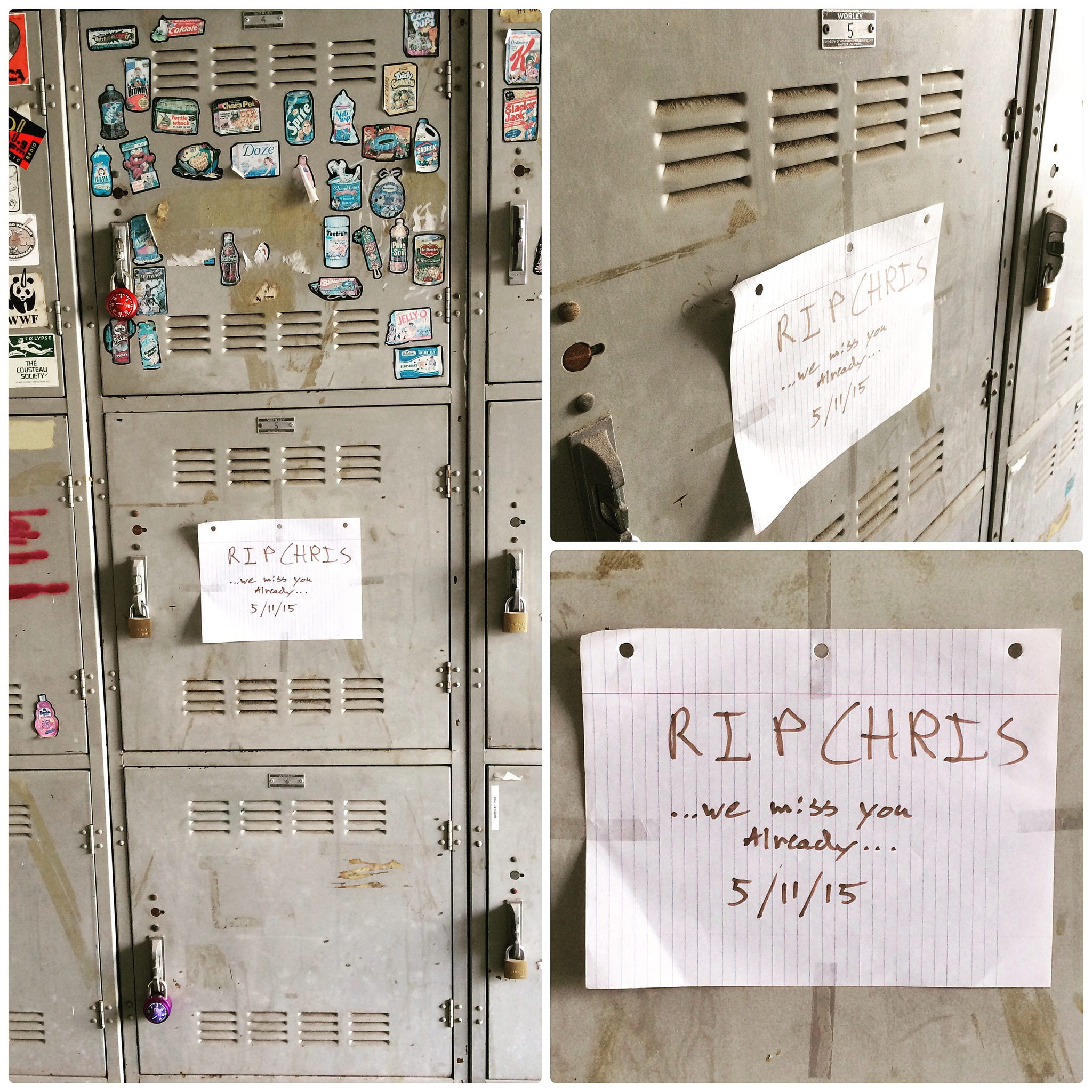Taking art to extremes
Chris Burden, M.F.A. ’71, gained fame for his provocative pieces

Battered locker No. 5 in the Claire Trevor School of the Arts is the only physical relic remaining at UC Irvine from artist Chris Burden’s tenure here. But his influence, imagination and commitment to pushing boundaries will live on in all who knew him in the campus’s early days and in students who follow him. Burden died of melanoma Sunday, May 10, at the age of 69.
Perhaps best known for the iconic “Urban Light” display at the Los Angeles County Museum of Art, Burden was always full of surprises. “You never knew what was going to come out of him next,” said Stephen Barker, interim dean of CTSA.
Burden earned a master’s in fine arts at UCI in 1971. His thesis was “Five Day Locker,” a performance piece that entailed locking himself inside a 2-foot by 2-foot by 3-foot art department locker for five days.
In the late ’60s and early ’70s, while a generation of performance artists was at work, Burden led the way in a subgenre called body art. “He was an innovator,” Barker said. “He questioned the notion of how an artist’s body is a work of art itself, and how it’s implicated and participates in the creation of art.”
In 2012, Los Angeles Magazine called Burden “Modernism’s Evel Knievel” on the strength of such works as “Trans-fixed” (1974), in which Burden was nailed over the hood of a Volkswagen Beetle; and “Shoot” (1971), in which he directed a colleague to shoot him in the arm with a .22 rifle from a distance of about 15 feet.
“Once again,” said Barker, “in ‘Shoot,’ he was asking the question, ‘How does an act like that become a story after the moment of shooting?’ The art disappears but the story remains. He was constantly interrogating the way in which art and artists manifest themselves.”
Burden’s later art – now in the collections of the Whitney Museum of American Art and The Museum of Modern Art in New York, the Tate Gallery in London and LACMA – was easier on his body. He predicted the invention of driverless cars when he unveiled “Metropolis II” at LACMA in 2012. The room-sized kinetic sculpture features more than 1,000 tiny vehicles racing through a high-rise city at a scale-model speed of 240 mph.
“Urban Light” (2008), an installation of 202 vintage street lamps at the same museum, sits on what was intended to be a plaza. But the temporary exhibit became a permanent L.A. icon.
“It made him famous,” said Barker. “It’s an enigmatic work – hard to pin down. Is it nostalgia? Is it a space, or a recalling of the history of urban development? Even as a stunningly beautiful piece of work, it’s a big question mark.”
Burden, the oldest of three children, was born in Boston, Mass., on April 11, 1946, to Rhoda and Robert Burden. He grew up in France and Italy and, at age 17, won a National Science Foundation grant to study in San Diego. He entered Pomona College in 1965, studying art, architecture and physics before attending graduate school at UCI. He taught at UCLA, becoming a tenured professor in 1986. He is survived by his wife, artist Nancy Rubins.